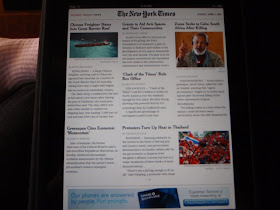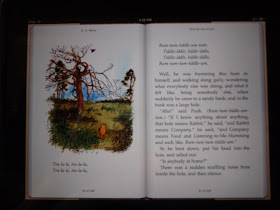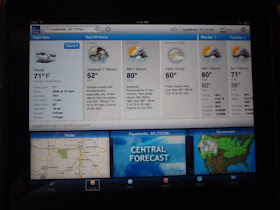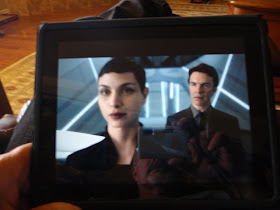Packwood Lake in Washington's Goat Rock Wilderness...

Lake Yellowstone in Wyoming...

The Alaska Range from the gravel Denali Highway...

The Yukon from the Alaska-Canada Highway (Al-Can Highway)...

Adventure is not outside man, but within, for you cannot cross the sea by simply staring at the water.









 The lower 135 miles flow within the boundaries of an area managed by the National Park Service and designated in 1972 as the Buffalo National River, the first national river in the United States. It remains one of the few unpolluted, free-flowing, un-dammed rivers in the lower 48 states and offers both swift-running and placid stretches. The scenic beauty is unrivaled and eye-delighting vistas appear around every bend in the river -- and the bends are numerous since the river's 153 miles are contained within a park that is only 60 miles in length. The water in mid-May was warm enough to allow swimming and if you look closely, you'll see young Sammy returning to Greg's boat here...
The lower 135 miles flow within the boundaries of an area managed by the National Park Service and designated in 1972 as the Buffalo National River, the first national river in the United States. It remains one of the few unpolluted, free-flowing, un-dammed rivers in the lower 48 states and offers both swift-running and placid stretches. The scenic beauty is unrivaled and eye-delighting vistas appear around every bend in the river -- and the bends are numerous since the river's 153 miles are contained within a park that is only 60 miles in length. The water in mid-May was warm enough to allow swimming and if you look closely, you'll see young Sammy returning to Greg's boat here...
 We were not allowed to put in at Ponca due to low water conditions in the upper section of the Buffalo. Instead we put in at Pruitt Landing just north of Jasper, Arkansas, and paddled the 101 miles to the confluence of the Buffalo and White Rivers.
We camped along the bank five nights, always careful to choose high ground in case the river rose from rains upriver. Despite rain three of the nights, we managed to have a campfire every night and the stars on the clear evenings were breathtaking.
We were not allowed to put in at Ponca due to low water conditions in the upper section of the Buffalo. Instead we put in at Pruitt Landing just north of Jasper, Arkansas, and paddled the 101 miles to the confluence of the Buffalo and White Rivers.
We camped along the bank five nights, always careful to choose high ground in case the river rose from rains upriver. Despite rain three of the nights, we managed to have a campfire every night and the stars on the clear evenings were breathtaking.
 Our group included 5 canoes with Ellen and me, Walt and Marcia ahead to our left, Jake and Scott ahead to our right, and Greg and Sammy in front. Not shown is Graham who is scouting ahead of the group.
Our group included 5 canoes with Ellen and me, Walt and Marcia ahead to our left, Jake and Scott ahead to our right, and Greg and Sammy in front. Not shown is Graham who is scouting ahead of the group.
 With two professional Florida guides as part of our group, meals were a delight, for despite the lack of refrigeration, Greg and Graham prepared delicious meals every morning and evening, including eggs and bacon, spaghetti, ...
With two professional Florida guides as part of our group, meals were a delight, for despite the lack of refrigeration, Greg and Graham prepared delicious meals every morning and evening, including eggs and bacon, spaghetti, ...
 We often paddled together enjoying the scenery and each others company as the miles floated by. Wildlife sightings could thus be shared with everyone.
We often paddled together enjoying the scenery and each others company as the miles floated by. Wildlife sightings could thus be shared with everyone.
 Several times each mile we came across rapids caused by boulders that had fallen from the mountainsides, or trees that obstructed the river, or gravel bars, and though all were merre ripples or class one rapids, some presented precarious situations when the current took the boats under "sweepers" or "strainers" -- trees that could capsize the boats, or sweep the paddlers into the river, or entrap the paddlers within the branches and drown you. Here's one such rapid and more are shown on the movie at the end of this post.
Several times each mile we came across rapids caused by boulders that had fallen from the mountainsides, or trees that obstructed the river, or gravel bars, and though all were merre ripples or class one rapids, some presented precarious situations when the current took the boats under "sweepers" or "strainers" -- trees that could capsize the boats, or sweep the paddlers into the river, or entrap the paddlers within the branches and drown you. Here's one such rapid and more are shown on the movie at the end of this post.
 Our numerous wildlife sightings included, deer, otters, beaver, bald eagles, vultures, a rtimber rattler within three feet of our tent, hundreds of turtles, many species of butterflies, woodpeckers, lots of fish, great blue and little green heron, and many more. This heron has a snake in its mouth...
Our numerous wildlife sightings included, deer, otters, beaver, bald eagles, vultures, a rtimber rattler within three feet of our tent, hundreds of turtles, many species of butterflies, woodpeckers, lots of fish, great blue and little green heron, and many more. This heron has a snake in its mouth...
 Ellen has a great post detailing some of our wildlife sightings here.
Ellen has a great post detailing some of our wildlife sightings here.














